Dog owners are no strangers to the most common canine pests like ticks and fleas. But did you know there are a dozen types of insects that want to attack, or attach to, your dog? These bugs will find their way into your home (and bed) if you’re not careful. While some can have harmless effects on your dog or lifestyle — like bed bugs and lice — others can put your dog’s life at risk with intestinal distress, anemia, and bloody diarrhea.
Discover the 12 most common bugs that attack or attach to dogs, how they can affect your four-legged friend and some handy prevention methods.
12 Most Common Bugs That Attack or Attach To Dogs
While there are about 12 different bugs that will want a piece of your pup, each bug has several different species. If you suspect your dog has been bitten or attacked by one of these bugs, consult your vet to determine the best course of action for treatment and prevention.
Mosquitos
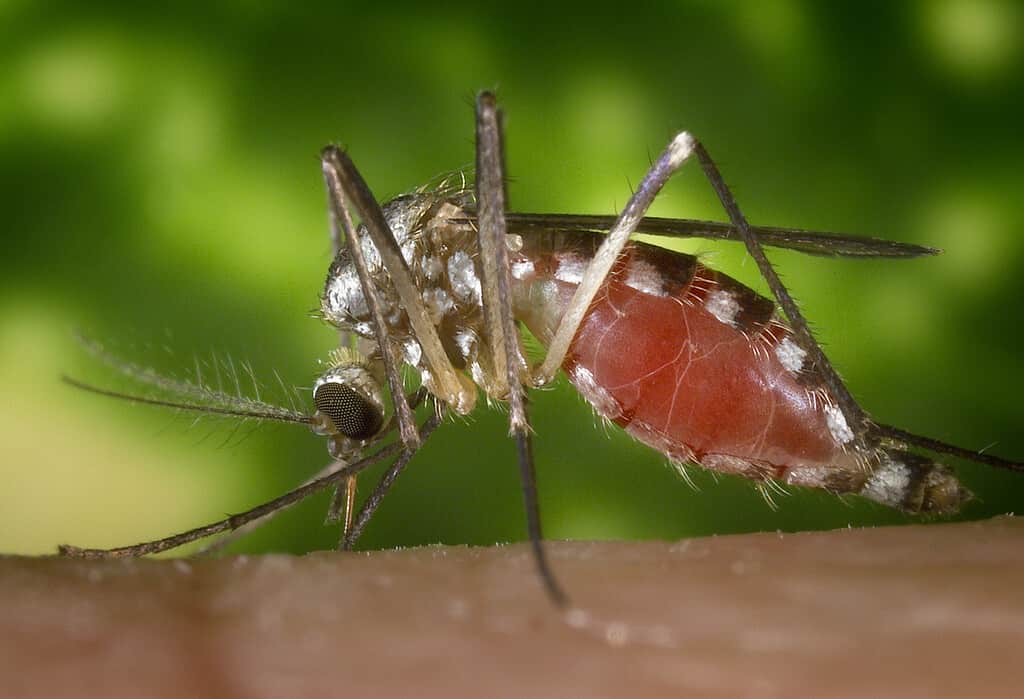
, or the tree hole mosquito, is positive for the West Nile Virus and is a vector for the La Crosse virus.
While mosquitoes remain a pest for humans, they can carry a potentially fatal disease for dogs. The Aedes, Anopheles, and Mansonia species of mosquitoes can carry heartworms — a parasitic worm that survives for years within a dog’s heart and lungs. Only female mosquitoes bite and suck blood. Your dog is at most risk of getting bit by a mosquito in the summer, especially when they’re outside panting. Mosquitoes will bite on the wider surfaces of dogs, like their backs and hind legs.
How this bug can affect your dog: Mosquitoes carry heartworm. If your dog isn’t routinely taking heartworm medication and gets bitten by a mosquito, it can contract heartworm and die within a few months of worm development.
Ticks

Dog ticks will cause irritation and itching.
©Jerry Kirkhart from Los Osos, Calif. / CC BY 2.0 – Original / License
Ticks remain one of a dog owner’s worst fears. Some are so tiny, it’s difficult to tell if they attach to your dog. Despite their size, ticks can cause massive, serious health issues. The American dog tick, the deer tick, the brown dog tick, and the lone star tick are common species that will attach to dogs. The deer tick remains a species that’s the top carrier of Lyme disease.
How this bug can affect your dog: Some ticks simply bite your dog and drop off when they’re full or dead — causing irritation and minor swelling, but not much more. Others can transmit fatal diseases. Significant infestations on dogs can lead to anemia or death from blood loss.
Fleas
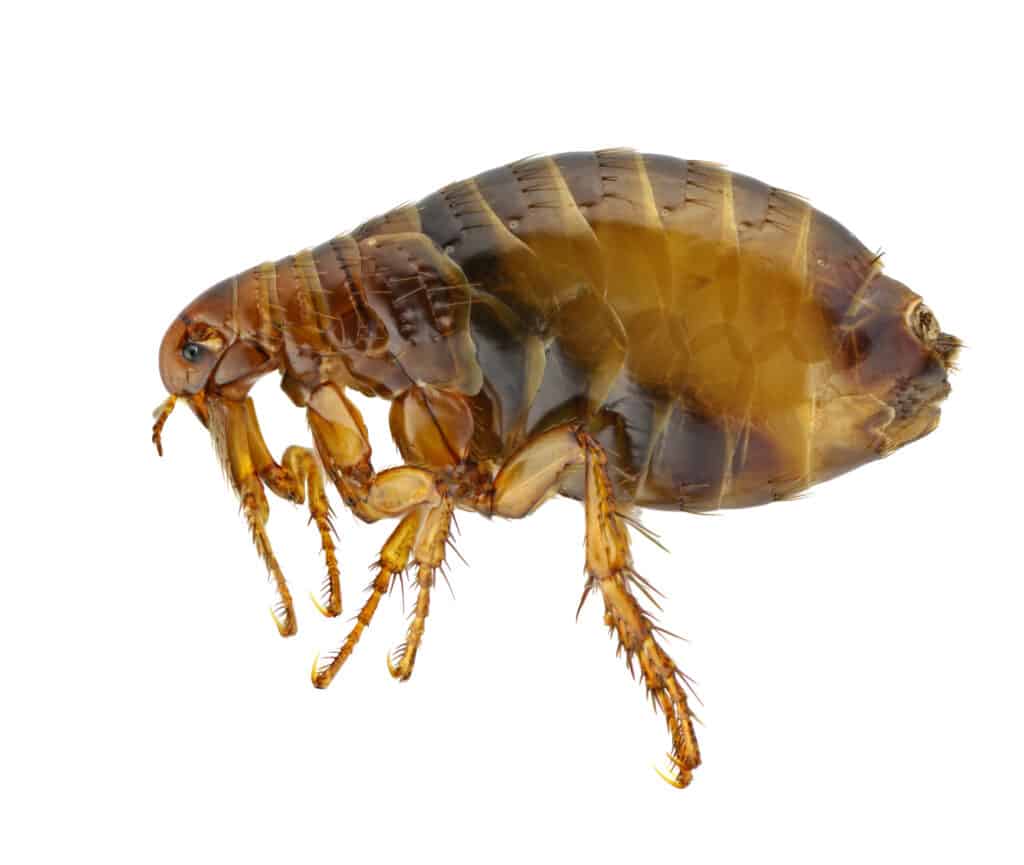
Fleas will cause itching and massive infestations in blankets and upholstery that are hard to get rid of.
©Cosmin Manci/Shutterstock.com
Dog fleas are nuisances and another bane of a dog owner’s existence. While nurtured, well-taken-care-of dogs might not see a bad infestation beneath their fur, stray dogs might face significant health issues with a bad infestation. Adult fleas will feed on your dog’s blood and produce eggs that they lay in your dog’s fur to restart the life cycle. Flea and tick prevention remains imperative to keep the parasite at bay.
How this bug can affect your dog: Fleas may not hurt a healthy dog — or a dog with a minor infestation. Major flea infestations can cause anemia and death.
Mites

A dog suffering from ear mites will exhibit redness in its ear and other signs of infection.
©Glikiri/Shutterstock.com
Dogs tend to suffer from four different types of mites:
- Demodex canis mites, which cause mange.
- Sarcoptes scabiei mites, which cause scabies.
- Otodectes cynotis mites, which cause extreme ear itchiness.
- Cheyletiella yasguri mites, which are also known as “walking dandruff.”
The most frequent type of transmission of mites is dog-to-dog contact during walks, at boarding facilities, and in daycares. Some mites might transfer to your dog from a surface (like bedding), so owners should remain diligent in washing dog beds and comforters where they sleep to prevent re-infestation.
How this bug can affect your dog: Depending on the mite, your dog may feel fine, with some slight discomfort, or itchiness. Healthy dogs can fight off mite infestations that cause mange, but any dog may become susceptible to ear mites or “walking dandruff.” Malnourished and stray dogs with mange may be at risk for death.
Ants
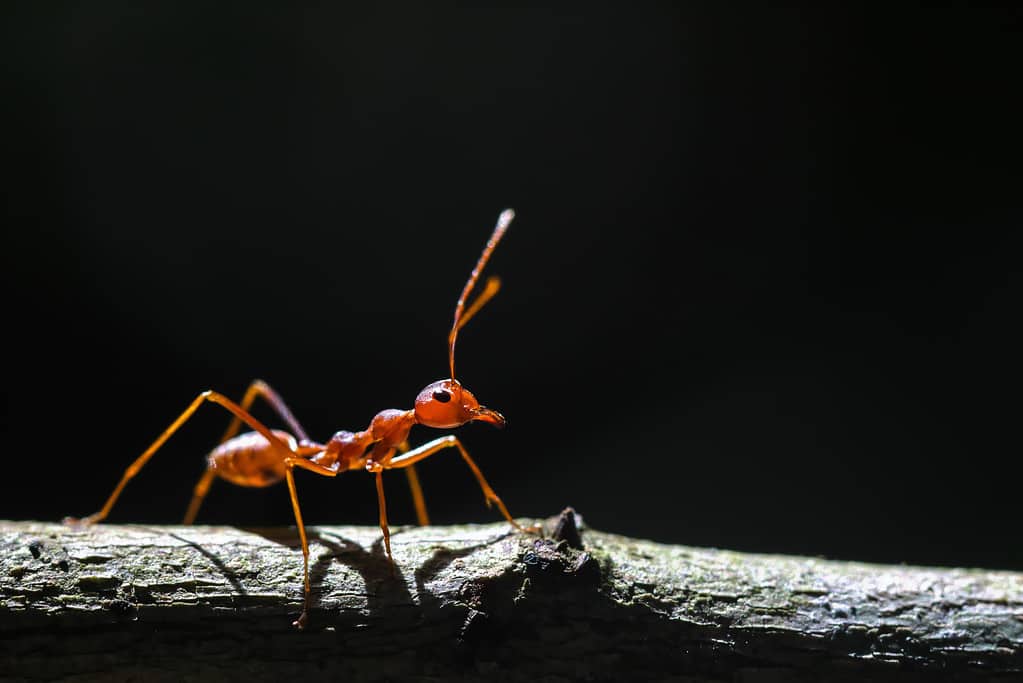
Dogs that accidentally play or lay on an ant hill may give ants a free ride inside.
©Tareq Ahmed/iStock via Getty Images
While ants won’t use your dog for a free ride or meal, they will attack if they feel threatened. Sweet, unassuming puppies playing in the yard might not notice the fire ant hill they’re standing on — until the ants come out in droves to protect their home and latch onto puppy skin with their strong mandibles. Carpenter ants, sugar ants, and pavement ants may also bite your dog, but they’re much less aggressive and territorial.
How this bug can affect your dog: Ants will bite dogs anywhere on their bodies — but the legs and nose remain the most common places for bites as these parts of the body are usually first to come into contact with biting ants. While the bite will feel painful and swell or itch, it shouldn’t create any lasting complications.
Black Flies
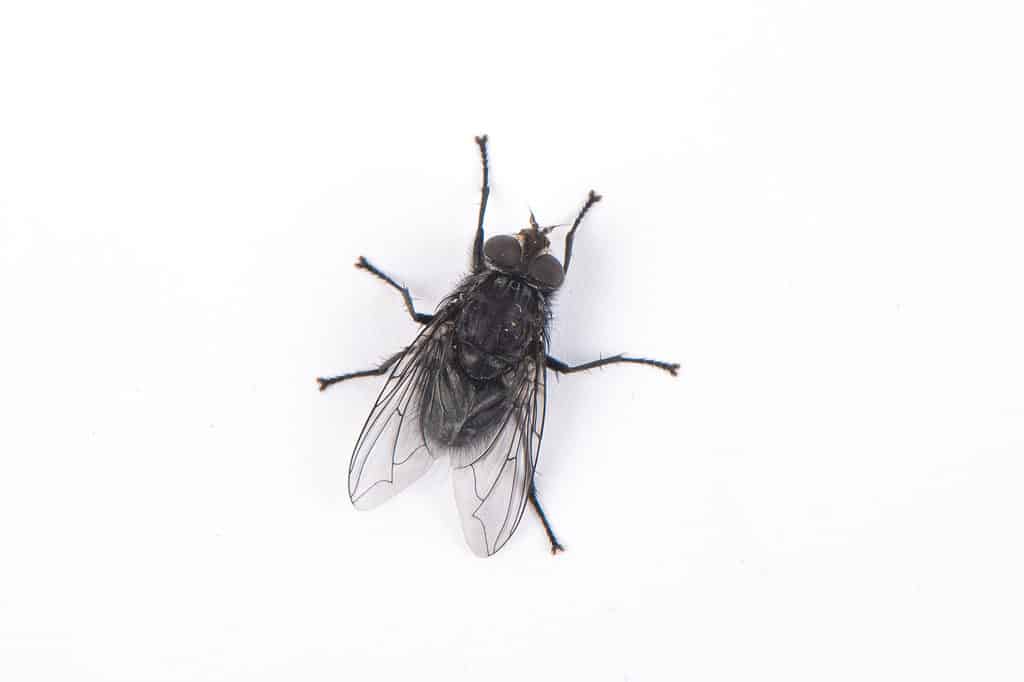
Black flies are infamous for their bites that cause itching, swelling, and inflammation.
©iStock.com/zhikun sun
Like other biting flies, black flies feed on the blood of mammals. Humans and dogs get bites from black flies and their symptoms remain similar to each other. Black flies usually live in wooded and humid regions and actively feed during the warm summer months. A black fly bite varies in appearance and looks similar to other bites — it may have a bullseye-like structure or it could look like a dark red bump. Black flies usually go for your dog’s ears and belly.
How this bug can affect your dog: Unless the black fly that bites your dog carries a disease, the bite will only hurt your dog for a short time and have some redness, itching, and swelling — similar to a human’s reaction to a biting fly.
Stink Bugs
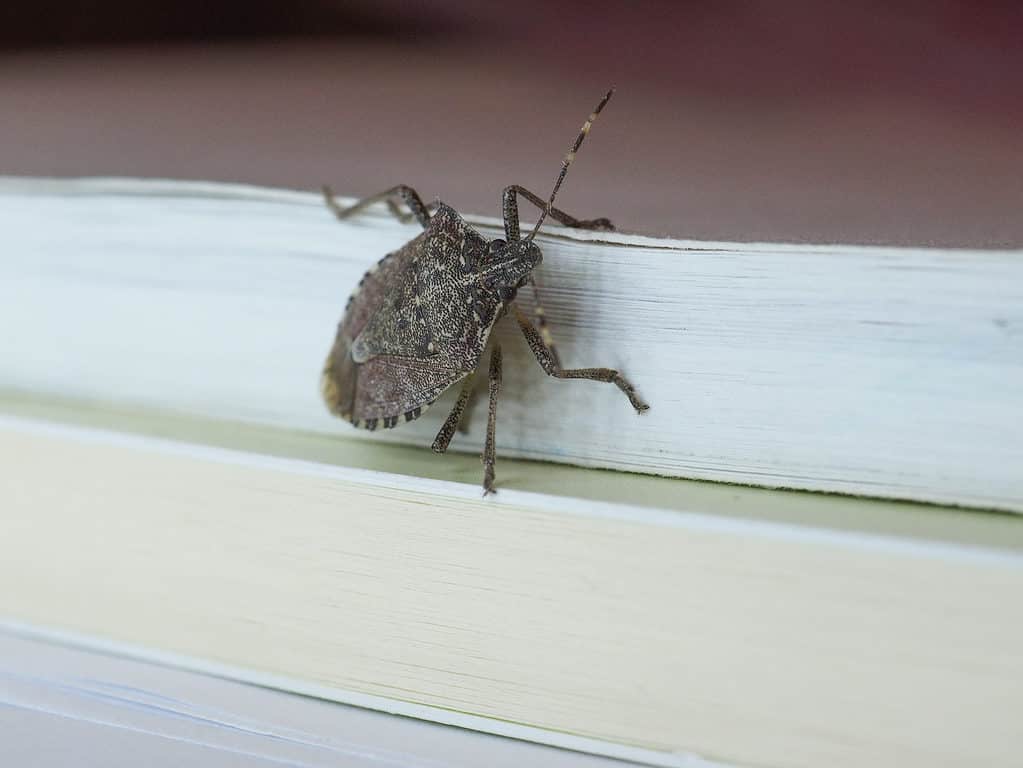
One distinctive feature of the brown marmorated stink bug is its shield-shaped body, which is typical of all stink bugs.
©Claudio Divizia/Shutterstock.com
Stink bugs are neither parasitic nor aggressive — they just might mistake your dog as a means to safer environments and hitch a ride on their leg or back after your dog plays outside. Generally, stink bugs don’t pose significant threats to dogs, and even their attachment to your dog’s legs or back can be accidental.
How this bug can affect your dog: Unless your dog eats one (or several) stink bugs, this bug is pretty harmless to your pup. If they do eat a stink bug or two, your dog may throw up from the unpleasant secretion the stink bug uses as its defense.
Bees

A swarm of hornets can cause severe injury to a dog.
©TTstudio/Shutterstock.com
Bees can pose serious risks to dogs who don’t realize the danger of a hive. Wasps and hornets can inflict more damage than standard bees because they can sting twice. One or two stings may cause an allergic reaction in your dog that you can treat with Benadryl or another antihistamine. The real danger comes from dogs unexpectedly stepping on or agitating a hive. Multiple, concurrent bee stings have the proclivity to cause a dangerous reaction in your pup that induces vomiting, diarrhea, lethargy, or difficulty breathing.
How this bug can affect your dog: Generally, a single bee or wasp sting will not kill a dog. The sting will cause pain and discomfort. Some dogs are allergic to the poison injected by a bee sting and can have a negative reaction that complicates into a more serious health concern. Even hornet stings will not result in immediate death. If your dog displays any heightened symptoms after a sting — including vomiting, diarrhea, pale gums, or difficulty breathing — you should take them to the emergency vet.
Spiders
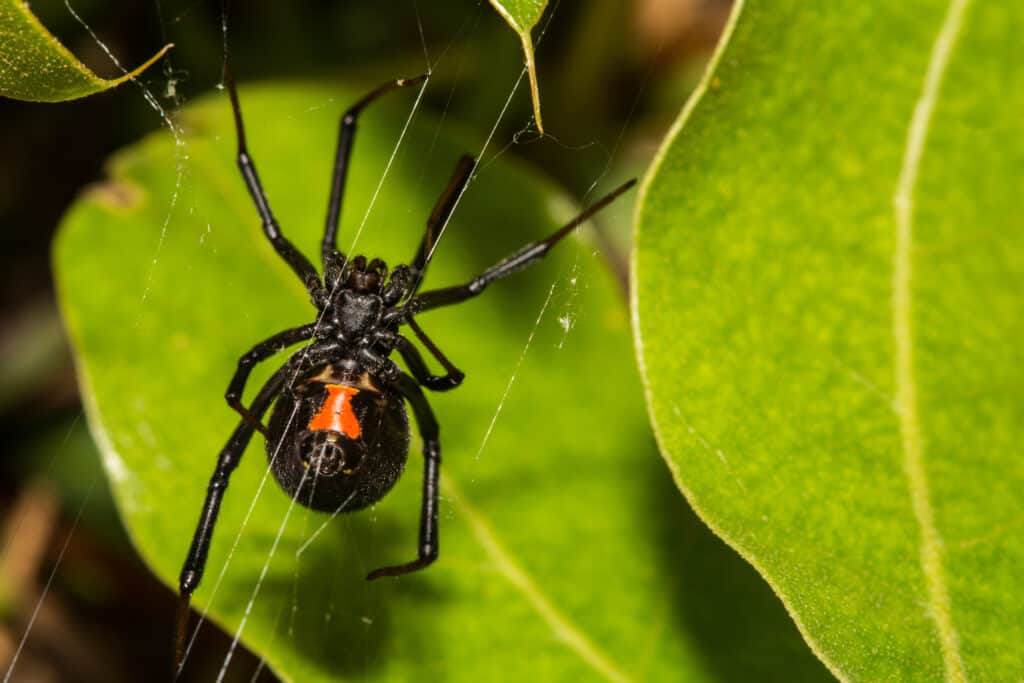
Black Widow spiders are dreaded for their venom.
©Jay Ondreicka/Shutterstock.com
When it comes to spiders, your dog may eat the spider before it has time to attack because most spiders your dog will come in contact with aren’t aggressive. Hobo spiders are the most aggressive house spiders and will protect themselves. Other spider species will only attack when they feel both cornered and threatened — or they’ll still try to get away. Owners can protect their pups by spraying the perimeter of their homes to ward off spiders and discourage playing with or eating the bug.
Two specific species of spider — the brown recluse and the black widow — have venom that can harm your pet. While both spiders like to spend time and live in areas away from the activity, your dog can easily get into woodpiles, clutter, and closets in which these spiders live. You may not be able to catch the spider but call your emergency vet immediately for the next steps to ensure you have a plan of action if your dog negatively reacts to the venom.
How this bug can affect your dog: Most spiders your dog will encounter are non–venomous and will flee before they have the chance to bite your dog. If they do bite your dog, the non-venomous bite may itch or swell. Some dogs don’t even notice non-venomous spider bites. Venomous spider bites from a black widow or a brown recluse, on the other hand, need emergency vet help. Symptoms include bleeding, seizures, muscle pain, drooling, and vomiting.
Bed bugs
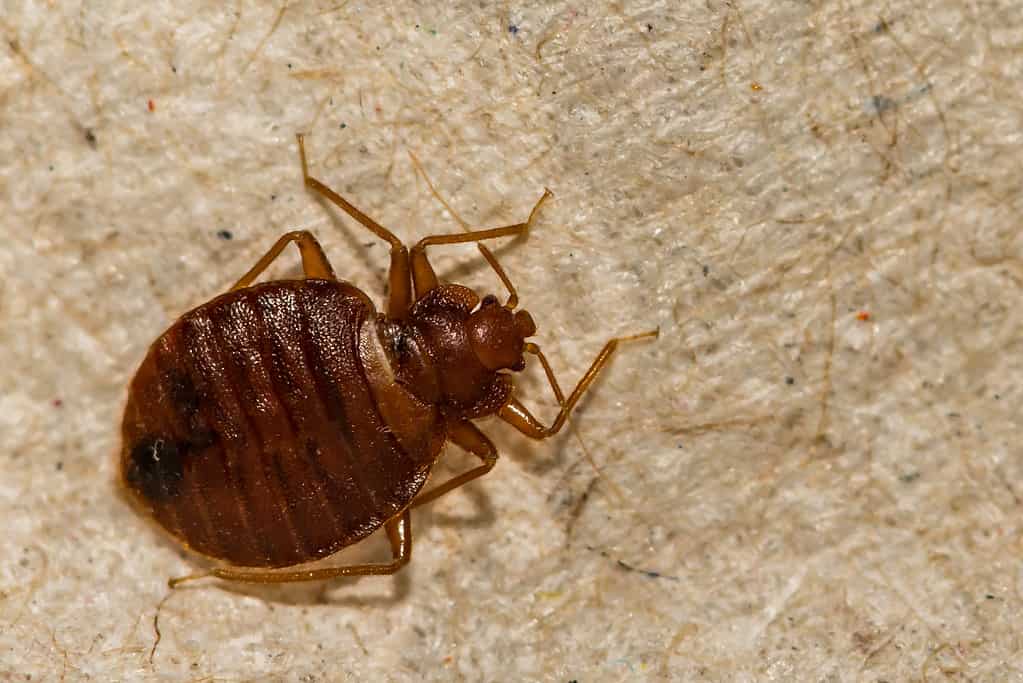
Bed bugs will feed on your dogs as well as you.
©Jay Ondreicka/Shutterstock.com
If your house has a bed bug infestation, your dog is not immune. Bed bugs make blood meals out of any warm mammal blood they can find, including pets. Like on humans, bed bugs feed at night or when the body is still. They won’t spend all day on your dog. When trying to rid your home of bed bugs, make sure you clean your dog’s bedding and comb them for bed bugs just in case — a reinfestation can spawn from just a few leftover bugs.
How this bug can affect your dog: While bed bugs will bite your pup, they won’t live on their skin or burrow. Outside of itching and minor swelling in some cases, bed bugs are as much of a nuisance to your dog as they are to you.
Dog lice

Dog lice can kill canines with blood loss if the infestation goes unchecked.
©BJkenel/Shutterstock.com
Similar to fleas are dog lice. Interestingly, dog lice can’t transmit to humans — and humans can’t transmit their lice to dogs. Lice remains species-specific, so you can rest easy that your entire family’s heads won’t be infected if your dog gets lice.
Unfortunately, dog lice is hard to get rid of. The hooks on the lice’s hands make dislodging the bug difficult. Your vet will have the best information when it comes to the best treatment plan, so be sure to consult them as soon as you spot signs of an infestation.
How this bug can affect your dog: Lice will cause itching, hair loss, and painful inflammation, but they normally don’t cause serious health problems. The only situation in which a lice infestation can turn fatal is if the lice are the blood-sucking species and the infestation is so untreated that the dog becomes anemic.
Worms
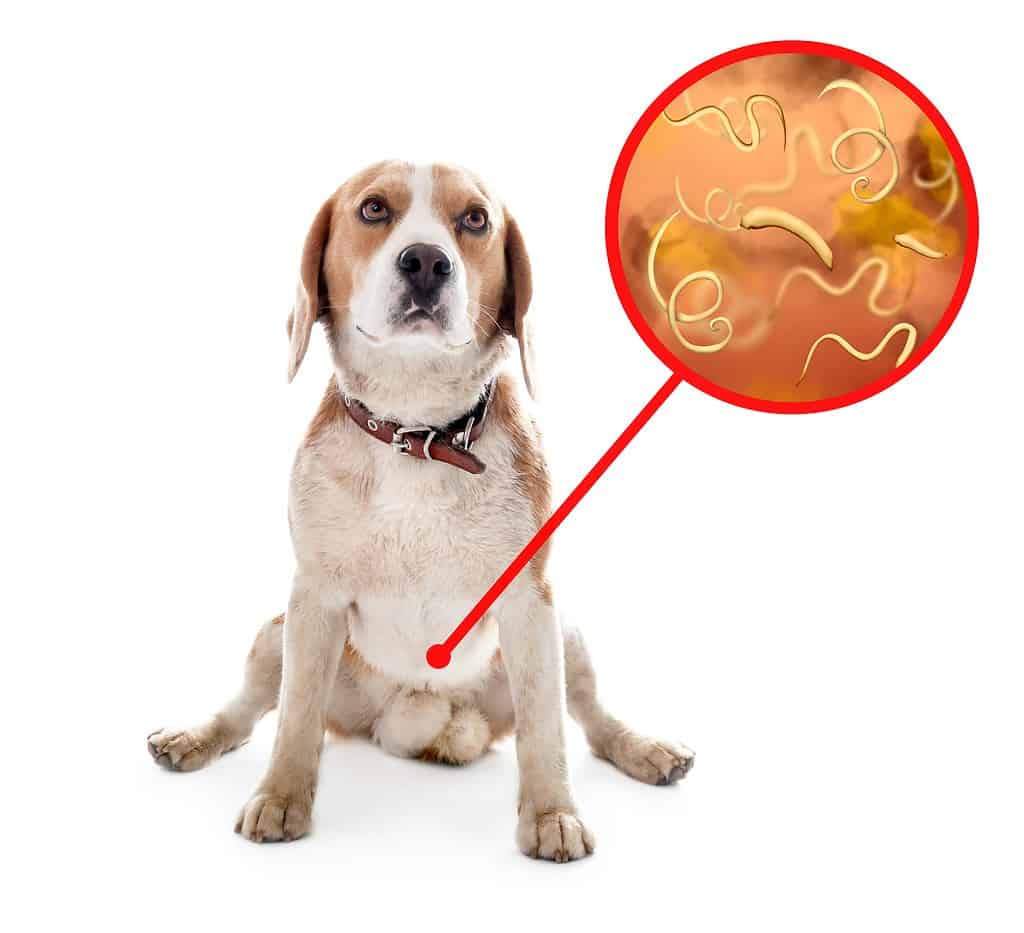
To get rid of tapeworms in dogs for good, you’ll need to get rid of fleas first! This can be done with parasite preventative from the vet.
©New Africa/Shutterstock.com
Apart from the heartworms mentioned above, four types of intestinal worms like to attach to your dog’s insides. They are roundworms, hookworms, whipworms, and tapeworms.
Roundworms affect puppies most and live in the intestinal tract to absorb a dog’s nutrients. They can and will burrow their way into other organs and parts of your dog. Hookworms will suck blood from puppies internally and can move around organs and tissue as roundworms do. Whipworms won’t suck as much nutrients from your dog as other worms but they make themselves at home in your dog’s intestines for a while. Tapeworms are long and flat parasites that suck nutrients from a dog’s small intestines. It won’t normally cause your dog extreme pain or harm — but owners might notice pieces of the tapeworm that look like small grains of rice in puppy poop.
How Dogs Get Worms
Getting worms depends on the species. Some dogs will obtain the intestinal worm from eating something they’re not supposed to, like their other dogs’ poop, snails, or infected soil. Some puppies get these worms from their littermates or mothers. Other surprising ways your dog can get intestinal worms include hunting and catching infected rabbits, grooming themselves and accidentally ingesting the larvae or eggs of one of the worms, and having fleas (because fleas are common transmitters of tapeworms).
How this bug can affect your dog: Depending on the worm, these bugs have different side effects. Puppies and young dogs who have large roundworm infections will probably experience uncomfortable symptoms like diarrhea, vomiting, weight loss, and a potbelly. If the roundworms move into the lungs, your dog will begin coughing constantly. Hookworms will cause internal blood loss and cause diarrhea. Whipworms will degrade your dog’s quality of life with consistent bloody diarrhea, weight loss, and debilitation. Finally, tapeworms can cause serious issues like anemia, weight loss, and intestinal blockages.
Prevention Measures
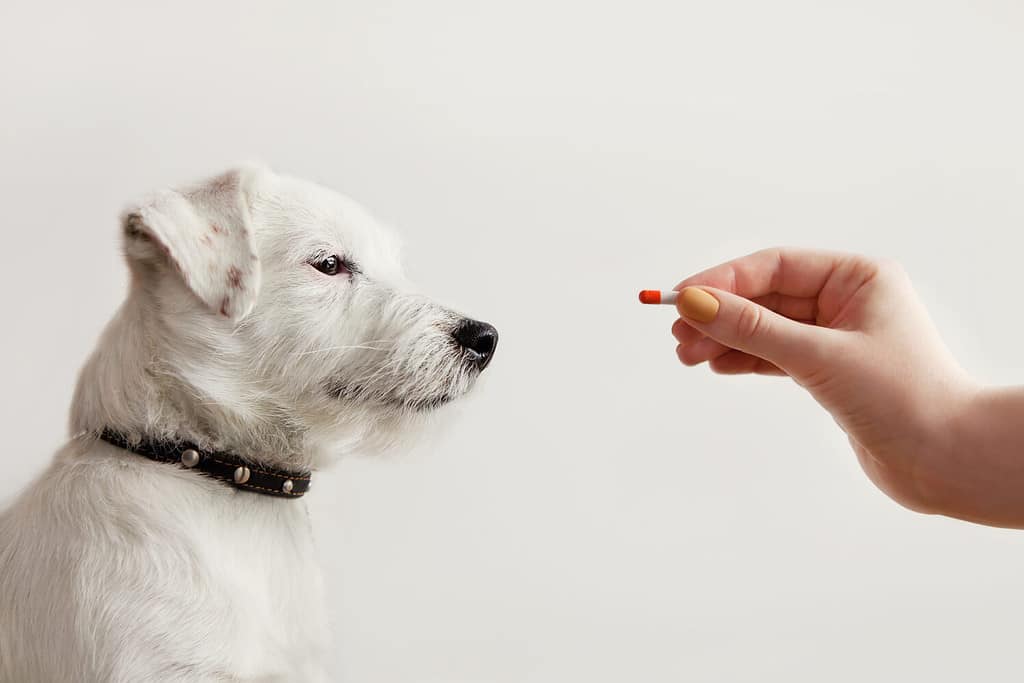
Parasite prevention medication will keep your dog safe from the bugs that attack and attach to it.
©Liudmyla Guniavaia/Shutterstock.com
While you can’t stop flies and mosquitoes from existing outside, you can prevent bites to the best of your ability by using prevention medication and using caution when you let your dog outside.
Dogs should receive flea, tick, and heartworm medication year-round. These medicines don’t prevent the bugs from being attracted to your dog, but they do prevent their ability to feed. Most mechanisms of action will attack the flea’s or tick’s nervous systems and/or control the ability to reproduce.
Determine when your dog is going outside and avoid the peak times for mosquitos. After walks, especially in the summer, check your dog’s paws, ears, belly, and neck for ticks and remove them before you go inside. Remove nests of bees, wasps, and hornets or ant hills, and watch your pup in the yard to ensure they don’t anger any remnants of the nests.
If your dog seems to have bugs attached to them nonstop, talk to your vet. There might be an infestation in your house you’re unaware of, you may have stopped treatment before all the bugs were gone, or your dog might have an underlying blood condition that attracts bugs to them.
When in doubt, turn to your vet. They have the knowledge and prevention measures to help your dog stay healthy, avoid getting bit, and help when a bite or sting does cause pain. By working together, owners and vets can help prevent bites and complications from the 12 bugs that prefer to snack on or attack their furry best friend.
The photo featured at the top of this post is © Jaclyn Vernace/iStock via Getty Images
Ready to discover the top 10 cutest dog breeds in the entire world?
How about the fastest dogs, the largest dogs and those that are -- quite frankly -- just the kindest dogs on the planet? Each day, AZ Animals sends out lists just like this to our thousands of email subscribers. And the best part? It's FREE. Join today by entering your email below.
Thank you for reading! Have some feedback for us? Contact the AZ Animals editorial team.







